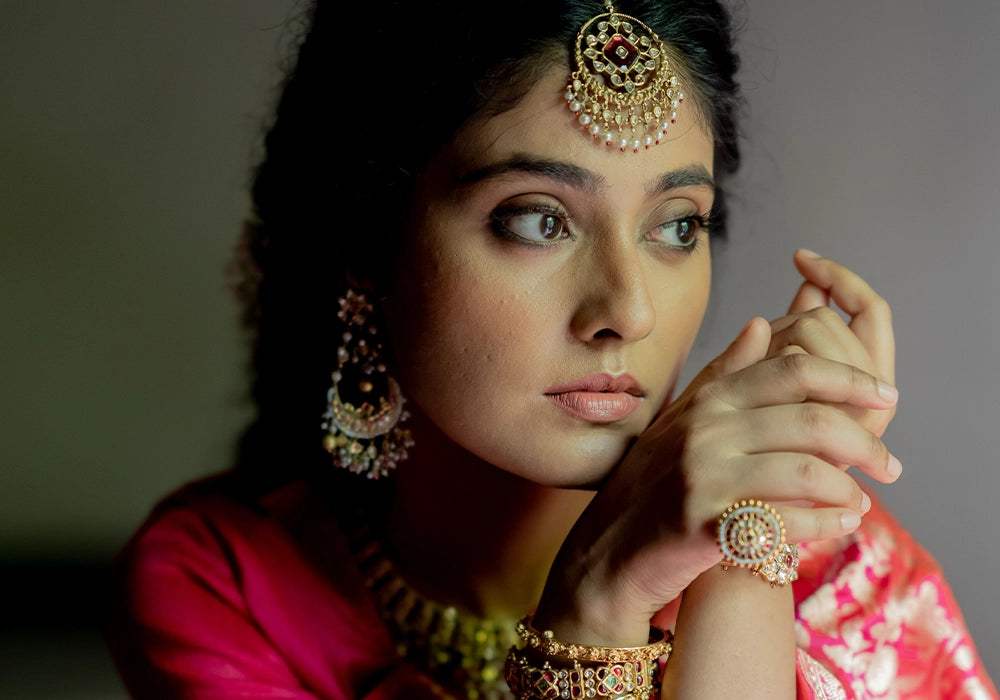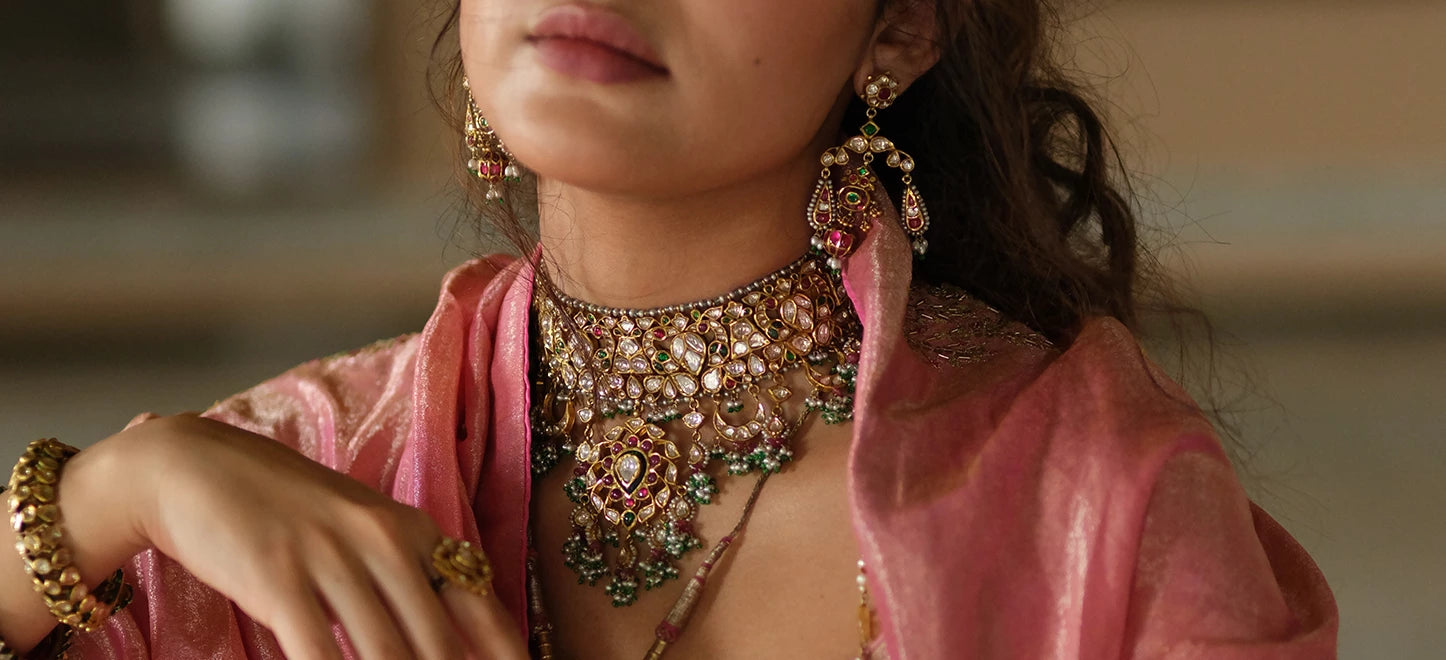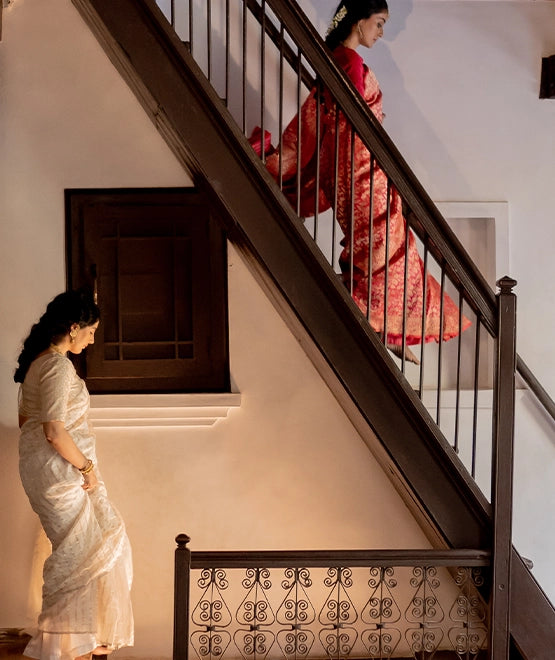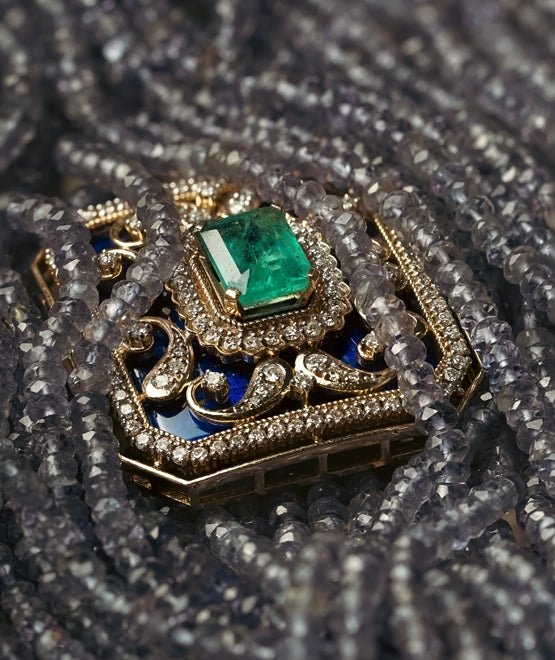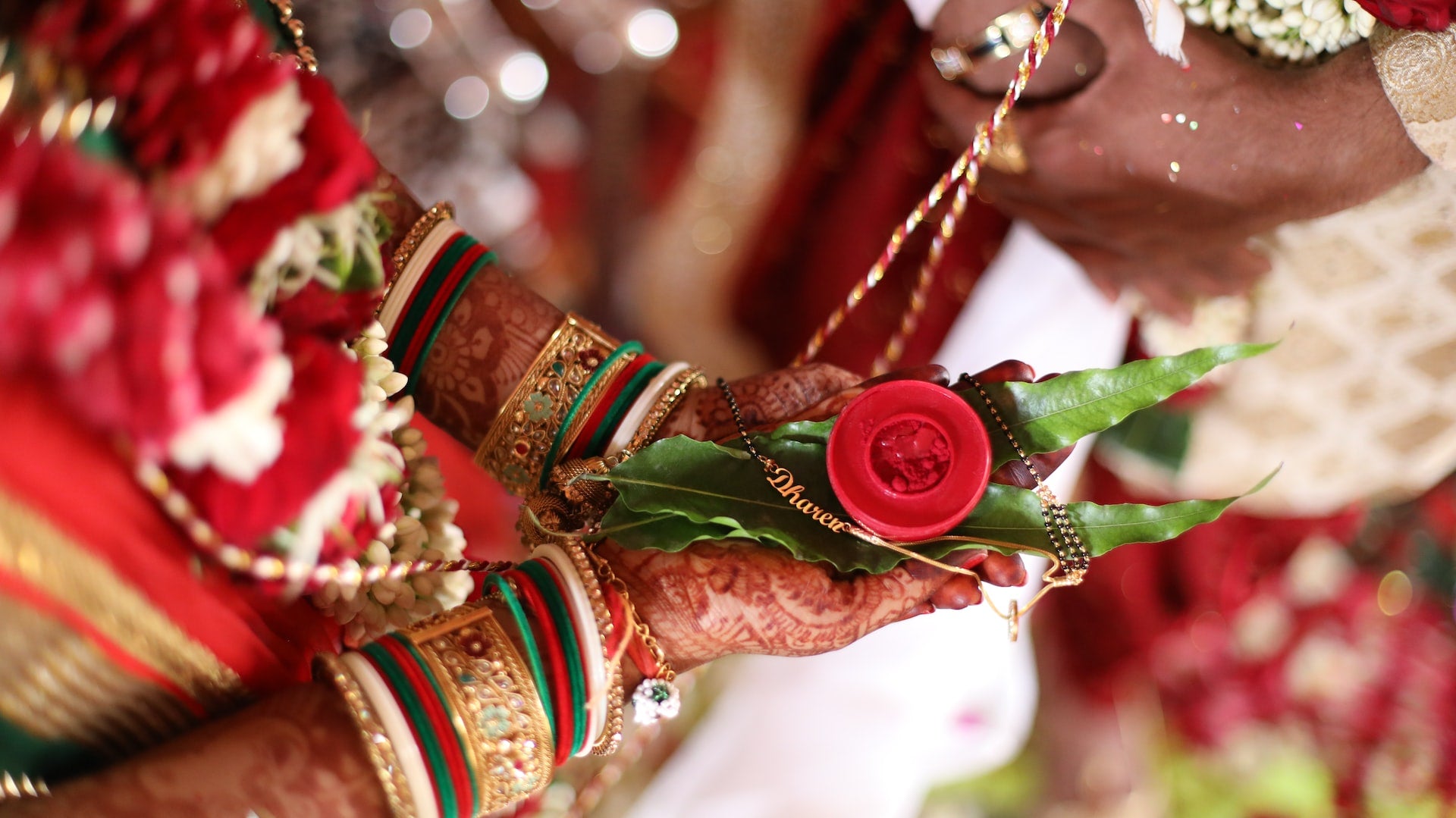Marriages, for a long time, are required to have some form of jewelry as a marital symbol that the woman never removes during her married life, until widowhood. One such jewelry piece is the permanent marital Indian bridal necklace, the Mangalsutram, which comes from the Sanskrit words mangal, meaning “propitious, blessed, happy, successful, prosperous,” and sutram, meaning “cord”. The groom ties it around his wife’s neck in a ceremony known as Mangalya Dharanam, Sanskrit for “wearing the auspicious”.
Decoding the Indian Wedding Necklace
The managalsutra is ideally created using 108 fine cotton strands twisted together and dyed yellow with saffron or turmeric, on which black beads are strung. Depending on the region, gold, white, or red beads are sometimes incorporated into this auspicious Indian wedding necklace. The black beads (Kala Pota) in this sacrosanct Indian wedding necklace represent Lord Shiva, while the gold pendant in this ornament represents Goddess Parvati, according to cultural beliefs.

Image courtesy: Unsplash
A mangalsutra traditionally contains nine beads that represent the nine different types of energies that safeguard the relationship between husband and wife from any evil energies. Furthermore, the black beads in this sacred thread are said to be endowed with the power of all the elements, including Air, Water, Earth, and Fire. These four elements contribute to the formation of a deep connection between a man and a woman.
History of the Mangalsutra
The earliest known evidence of a mangalsutra being a part of a bride's wedding jewelry goes back to the sixth century AD when a solitary yellow thread would be tied around the bride to safeguard her from evil spirits. India, Sri Lanka, and Nepal are all home to the social practice of tying this Indian wedding necklace.

Image courtesy: Unsplash
The concept of sacred thread has been around for centuries, dating back to the Sangam period. However, the nature of these auspicious wedding necklaces has evolved over time and varies greatly between communities. In many Indian communities, the mangalsutra appears to be missing, and other forms of marriage identifiers have taken their place. For example, in many parts of North India, toe rings and glass bangles indicate the marital status of the woman.
Adi Shankara, an 8th-century Indian Vedic scholar, and teacher underlined the relevance of the mangalsutra in his famous book Saundarya Lahari. According to Hindu culture, this wedding necklace is worn to ensure the husband's long life. A married woman is supposed to wear the mangalsutra throughout her life because it is believed that the practice improves her husband's well-being. Bridal jewelry also served as an economic security against old age and widowhood in ancient times, as women had no property rights.
Thali: The Bridal Necklace of the South
The Thali is the southern bridal necklace. The word is derived from the vernacular names of the palmyra palm (thala) or the large-leafed talipot palm (thali pat), both of which are common in southern India. Originally, a strip of either of these palm leaves was tied around the neck of a married woman to suggest her marital status. The term and custom were shifted to the wedding gold necklace for women.

This superb ceremonial necklace incorporates a gold pendant or ‘tali’ symbolizing marriage, and was probably made for a bride from the Nattukottai Chettiar community in South India. It has an imposing pendant adorned with images of the Hindu god Shiva and his consort Parvati, seated on Nandi, the sacred bull, before a temple. The small figures are very skilfully worked in gold repoussé, an important technique in South Indian jewelry. The repoussé work is pierced in places to show the gleam of red foil backing. Above these figures is a contrasting flat panel of delicate tracery showing a deer between two birds of paradise.
Source and image courtesy: Victoria and Albert Museum
The Kalithiru of the Chettiar community is an elaborate version of the Thali wedding necklace. The tying of the Kalithiru signifies the formal conclusion of the Natukottai Chettiars’ marriage ritual.
The Kalithiru was traditionally tied around the girl in two parts, according to Nagarathar tradition. When the girl child becomes eligible for marriage, the lower portion, which features the ethanam with Shiva and Parvati, is tied around her. And her groom tied the entire Kalithiru—the two strands together, with the tali in the middle of the top strand—on the day of her wedding.

Elaborate necklaces of this type were presented by the groom’s family during wedding celebrations of the Chetiar community, a Shaivite mercantile caste, and formed part of the bride’s wealth (stridhan) thereafter. The necklace was initially part of a dowry given to the bride by the groom at a climactic moment in the ceremony, the three knots ritual. This form of necklace is known as a Kali-Tiru; the elaborate Thali type, as seen here, generally includes a central Shiva and Parvati on a medallion. The four fingers of the central pendant are understood as denoting the four Vedas.
Source and image courtesy: The Met Museum
The Mangalsutra Across Languages
The mangalsutra has different names in different languages. It is called Thali or Maangalyam (மாங்கல்யம்) in Tamil, Nuptial Chain in English, Thella (තැල්ල) in Sinhala, Mongolsutro (মঙ্গলসূত্র) in Bengali, Mangalsutra (मंगळसूत्र) in Marathi, Mangalyasutra (ಮಾಂಗಲ್ಯ ಸೂತ್ರ), Thali (ತಾಳಿ) in Kannada, and Thali (తాళి), Maangalyamu (మాంగళ్యము), Mangalasutramu (మంగళసూత్రము) or Pustelu (పుస్తెలు) in Telugu, Thali (താലി) in Malayalam, and Mangalasutra (ମଙ୍ଗଳସୂତ୍ର) in Odia.
